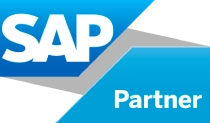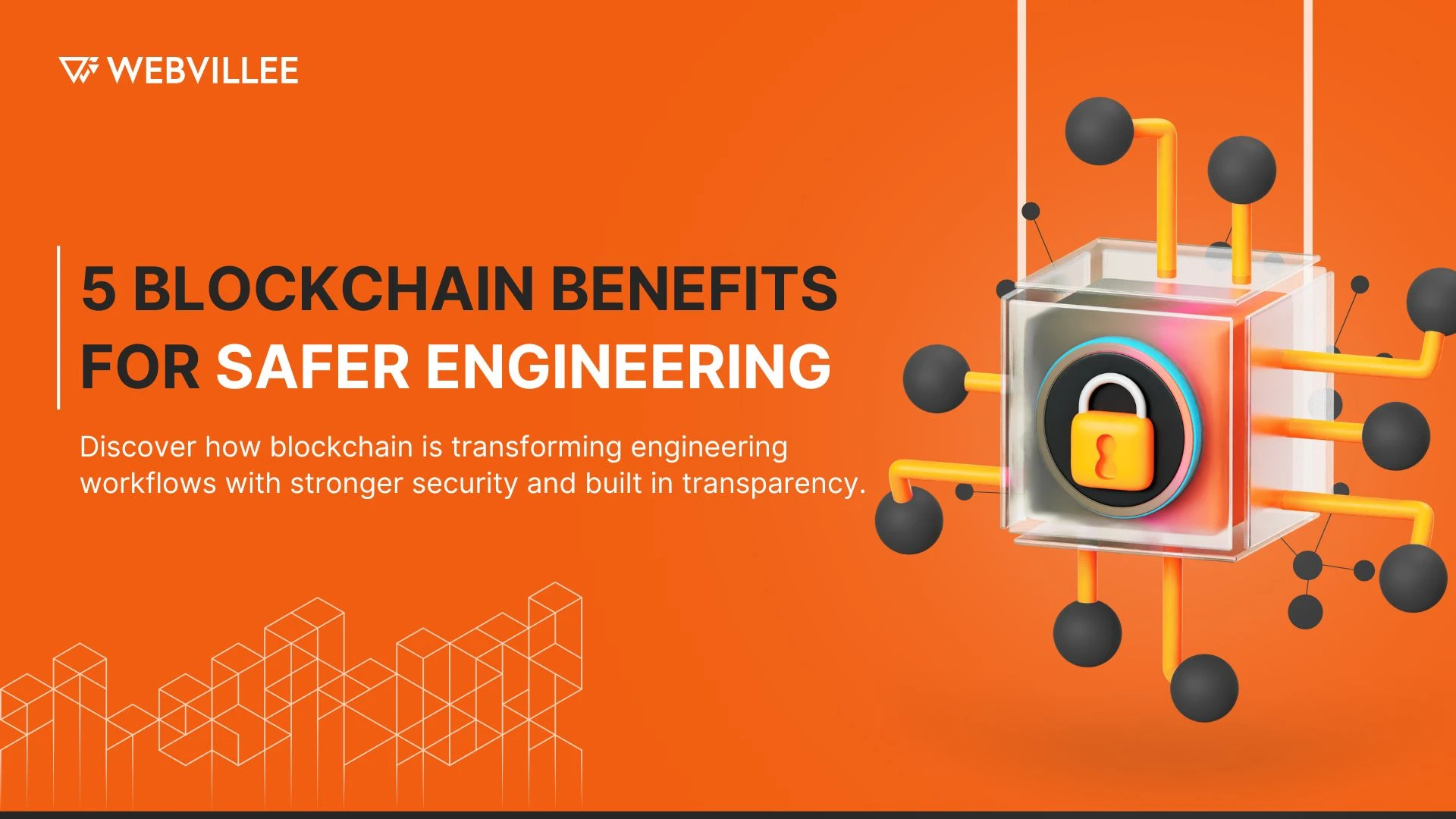In today’s hyper-connected world, engineering systems are more data-driven, collaborative, and distributed than ever. Whether it’s product design, supply chain logistics, or infrastructure development, trust and traceability are non-negotiable. For any modern Product Engineering service, ensuring transparency across every stage of development is critical. That’s why blockchain in engineering is becoming increasingly important for ensuring transparency, data integrity, and secure collaboration across complex workflows.
Blockchain is stepping into engineering as more than just a tech trend. It’s quietly reshaping how security, transparency, and accountability are maintained in complex engineering environments.
Here are five ways blockchain is making engineering more secure, reliable, and transparent in 2025.

1. Permanent and Verified Documentation
In engineering, documentation isn’t just a formality, it’s a foundation. Designs, revisions, approvals, and test results form a continuous record that projects depend on. If even one link in that chain is broken or altered, the consequences can ripple across timelines and budgets.
Blockchain helps protect documentation by:
- Storing each document version as a timestamped, tamper-resistant entry
- Creating an audit trail that can’t be deleted or overwritten
- Linking each change or approval to a verified digital identity
This adds a layer of trust to every document your teams rely on, from blueprints and bills of materials to safety checklists and field reports.
No more endless email threads or guesswork about who signed off on what. Blockchain delivers accountability from the first draft to the final handover.
2. Clearer Supply Chain Oversight
Every engineering project involves components, systems, and materials that come from a network of global suppliers. But traditional procurement tools make it hard to track the full journey of parts, from raw material to delivery and integration.
When delays or defects happen, identifying the root cause can be time-consuming. Sometimes, it’s impossible to verify the origin of a component without going through layers of disconnected systems.
Blockchain brings clarity by:
- Recording every transaction in the supply chain in a shared ledger
- Enabling traceability from manufacturing to deployment
- Validating the authenticity of parts with verifiable data trails
This doesn’t just protect your timelines. It also helps teams make faster decisions when something changes. If a supplier recalls a part, you immediately know where it was used and how to address it.
You’re not just reacting to issues, you’re anticipating them with confidence.
3. Improved IoT Security in Industrial Systems
Engineering environments are becoming smarter. Sensors monitor pressure, temperature, or equipment performance. Devices communicate across networks to optimize energy use or automate testing. But these same devices create thousands of new endpoints, and each one is a potential security risk.
Many industrial systems were never designed with cybersecurity in mind. Once connected, they become vulnerable to tampering, unauthorized access, or data corruption. That’s why organizations are turning to simplified IoT solutions that integrate blockchain to streamline security and device management.
Blockchain adds a new layer of protection by:
- Providing a decentralized method for authenticating device identities
- Logging each interaction or data point with verified timestamps
- Detecting and flagging anomalies in data streams
In effect, blockchain acts as a watchdog. It doesn’t replace your cybersecurity systems, it strengthens them by making sure every device and data point has a verified chain of trust.
This reduces the risk of downtime, tampering, and data breaches in high-value environments.

4. Smarter Collaboration Across Distributed Teams
Engineering projects often involve contractors, consultants, clients, and compliance teams, all working in different locations, time zones, or organizations. Without a shared system of trust, coordination slows down and miscommunication becomes common.
Blockchain brings structure to that collaboration by:
- Automating approvals and workflows using smart contracts
- Keeping everyone on the same page with a shared source of truth
- Digitally verifying who contributed what and when
Smart contracts, in particular, are powerful in complex engineering projects. They can enforce project rules, such as triggering payments, approvals, or alerts, only when predefined conditions are met.
Instead of chasing updates or reconciling spreadsheets, your teams can focus on the work itself. Everyone gets the information they need, when they need it, no delays, no surprises.
5. Simplified Compliance and Inspection Processes
Compliance isn’t optional in engineering. Safety standards, environmental rules, and building codes are part of daily operations. But proving compliance is often a slow, manual process. Inspections generate paperwork. Audits require weeks of preparation. And documentation must be kept for years.
Blockchain streamlines this with:
- Real-time recording of inspections and certifications
- Easy access for regulators, clients, or auditors
- Permanent records that can’t be lost or falsified
With blockchain, compliance becomes proactive rather than reactive. You’re not scrambling to prove you did things right, you already have the proof, verified and time-stamped.
This saves time, reduces errors, and ensures your team stays ahead of regulation without slowing down execution.
Why Blockchain Works So Well for Engineering
Engineering is about systems. Whether you’re working with machines, infrastructure, or code, you’re constantly building frameworks where everything must align. Blockchain fits naturally into this mindset.
It brings:
- The structure of how data and decisions are shared
- Integrity in every action taken across teams
- Visibility across the entire lifecycle of a project
In a field where trust, timing, and precision matter, blockchain reinforces the processes that already exist, making them more reliable, transparent, and secure.
You don’t have to reinvent how your team works. Blockchain helps you do it better, with less risk and more clarity.

Use Case Snapshot: Blockchain in Engineering Projects
- Infrastructure Engineering
Smart contracts manage payments based on real-time milestones (e.g., concrete curing, inspections passed). All progress is logged for clients and regulators to view. - Aerospace Manufacturing
Every part installed on an aircraft is tracked from source to installation using blockchain. If a defect is discovered, the affected parts can be isolated in minutes. - Energy & Utilities
Sensor data from remote oil rigs or wind turbines is logged on a blockchain ledger. This ensures no tampering and provides verified data for performance analysis and safety audits.
These examples show the versatility of blockchain, not as a one-size-fits-all tool, but as a flexible layer that reinforces the systems you already depend on.
How Webvillee Can Help
Webvillee helps forward-thinking engineering teams adopt blockchain in meaningful, measurable ways. We don’t offer generic platforms; we build tailored solutions for real challenges, from secure document trails to decentralized collaboration tools.
Whether you’re building smart infrastructure, managing critical supply chains, or modernizing your compliance workflows, Webvillee brings clarity and confidence to every part of the process.
If you’re exploring how to reduce risk, protect your data, and build stronger collaboration across teams, Webvillee is ready to help you implement blockchain in a way that makes sense for your business. Get in touch with us today to start building systems that work as precisely and securely as the engineering behind them.

